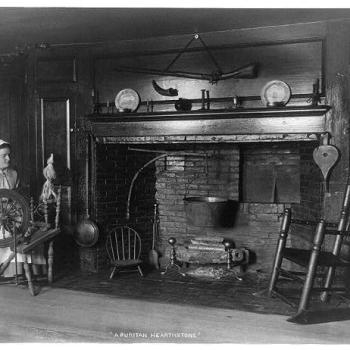As we pass George Whitefield’s 299th birthday this week, I am preparing to deliver the revised manuscript of my Whitefield biography to Yale University Press. It is a good time to review how publishing a history book works, and to give an update on where the biography stands.
To publish a book with an established press, you ordinarily need a “platform” from which to write a book – in the world of religious history, the most common such platforms are an academic position or a pastorate. It is tough, though not impossible, to publish without holding a position that would (seem to) justify your position as an author. So my job at Baylor, as well as my previous track record of publishing, are foundations for the publishing process. I also am grateful to have a job that allows plenty of time and resources for publishing – it would be difficult to publish actively if I had to do it “on the side.” (“Platform” is a much bigger issue, increasingly connected to social media reach. Michael Hyatt does a great job explaining why a platform is essential, but Scot McKnight recently registered some important doubts about platform-based publishing.)
Then you need an idea for a book. Whitefield will be my sixth book, aside from edited volumes, and I began to consider doing a biography of him as I worked on my 2007 book on the Great Awakening. (Whitefield, if you don’t know, was the most famous evangelical preacher of the eighteenth century.) There are already excellent biographies on Whitefield, written both from explicitly Christian/pastoral perspectives, and from more academic/scholarly perspectives. I thought perhaps I could bridge those two approaches, as a professional historian and an evangelical Christian. Whitefield’s 300th birthday is coming up in December 2014, so the timing seemed right.
The next step, for me, is not one that all authors, especially academic historians, necessarily take. I work with a literary agent, which is indispensable for engaging many prominent presses. My agent and I developed a proposal for the biography, and after conversations with a few presses, we signed a contract in 2011 with Yale. I am delighted to be publishing with Yale, because of their prominence as an academic publisher, because I have had an excellent experience with them in two previous books, and because they can reach a broader audience with their books than presses that cater exclusively to scholars.
I had already done much of the background work on the biography in my previous work on the Great Awakening, so perhaps my greatest challenge in writing the Whitefield biography was systematically reading all the available sources on Whitefield (letters, sermons, journals, etc.) and integrating them into the narrative. Many of these sources are published, or in digitized editions of eighteenth-century imprints. Some of the manuscript sources are in archives, so I corresponded with a number of libraries (Duke, SMU, etc.) to get scans of Whitefield letters, and used interlibrary loan to borrow some microfilm collections. Finally, earlier this year I went personally to several U.K. archives, including the British Library, which holds an unpublished Whitefield diary.
The chapters in the book are roughly chronological, following the course of his remarkable career, and they focus especially on Whitefield’s preaching talents, theological controversies, his relationships with John Wesley, Jonathan Edwards, and Ben Franklin, his troubling advocacy of slavery in colonial Georgia, and his personal ownership of slaves. I admire Whitefield a great deal, but I don’t intend for this biography to paint a picture of a pristine saint.
This summer I submitted a first draft of the whole manuscript to Yale, who then sent it for blind peer review to two scholars in the field. These readers submitted (extensive) suggestions for expansion and revision, which I spent much of the fall addressing. Now I am preparing to submit the revised draft, which will receive attention from my Yale editors, who will offer suggestions related to style and presentation. Once those changes are in place, we will go into typesetting and production, with (Lord willing) a published book in hand in fall 2014.












